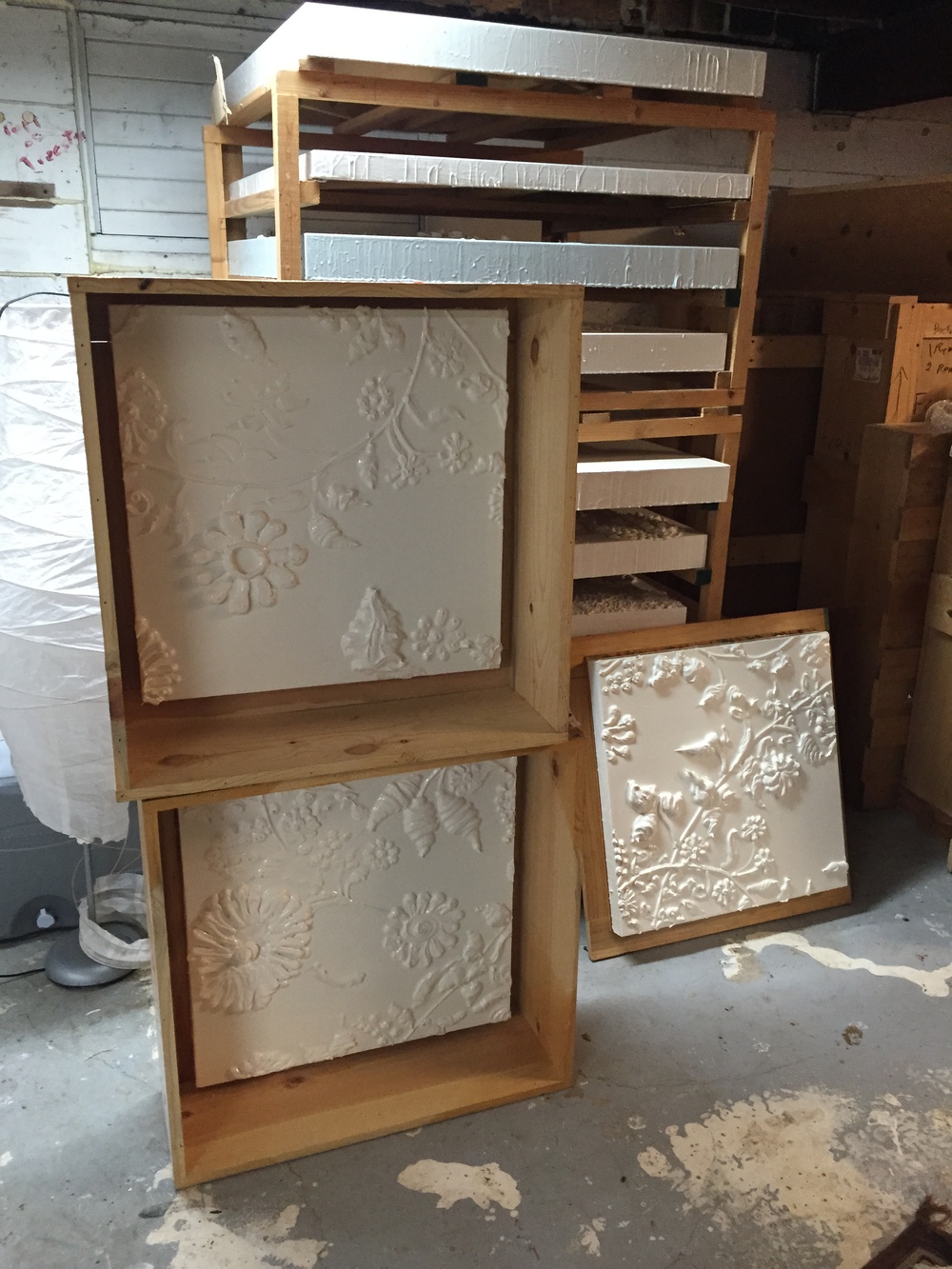“My moment of deepest inspiration came to me while lying on my back while at the Cesky Krumlov Castle in the Czech Republic. As my eyes roamed back and forth across the painted limbs, leaves, and flower heads above me I recognized the ecstatic impulses of an artist who had lived long before. Suddenly I ached for her marks to live on. I knew that my role was not to restore, or even replicate what she had done before, but rather to channel that echoing creative impulse through my own visual language. The essence of my current body of work was born that day.”
Eugenia Pardue uses the intoxicating lure of contrived beauty to beckon the viewer forward to want to touch her paintings, like frosting on a cake. They are seductive paintings, comfortable as clean white peplum bedspread yet ephemeral and empty of color as pale ghosts or distant memories. In her wall reliefs, Pardue references many visual emblems from history to fertilize the mythical gardens she conjures in her white on white paintings: marble carvings, peeling frescos, carved relief facades, gilded carriages, elaborate plaster moldings, ceiling medallions and other Rococo and Baroque ornaments that infuse her paintings with a sense of faded history, like bleached fossils or threadbare linens.




